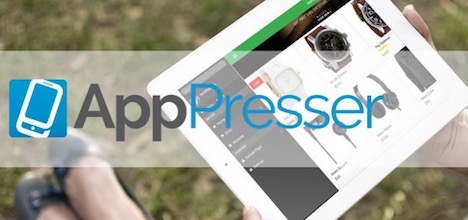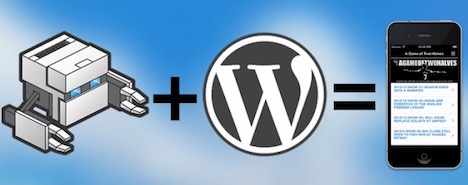How to Create a Mobile App (iOS & Android) for WordPress Blog
In today’s times, whether you’re a pro blogger, an online publisher, or a news website, it is vital to have a mobile application. According to the latest stats published by Flurry, an apps analytics company, the average US consumer spends two hours and forty twenty minutes daily on mobile devices, and 86% of that time surfing apps.
A native mobile application makes good sense to monetize your WordPress blog and to build a broad audience base. However, creating a mobile application is not everyone’s cup of tea, especially for the bloggers, those who don’t have any coding knowledge, and the experience to get their hands dirty with PHP, Drupal, or any other mobile app building platform. On the other hand, hiring a professional developer is also not a sensible move for bloggers with not enough funds.
Read the below-mentioned procedure to create a robust, scalable and user-friendly mobile App for WordPress Blog with AppPresser:
What is AppPresser?
The easiest and the fastest way to create an app for your WordPress site! AppPresser is a new tool that uses WordPress as a full framework to built high-performance and responsive applications. It offers a full spectrum of tools and features to create an app that can create a buzz in some of the top app stores.
And, the best part, bloggers with no prior programming experience can build customized mobile apps with AppPresser, just like creating a website on WordPress. And, this platform allows you to build an app that has all the characteristics of your WordPress site.
Step 1: Getting started – It doesn’t require ninja programming skills, just basic WordPress knowledge
Firstly, install the AppPresser plug-in, then log onto on your WordPress admin, move the cursor to the left admin panel, click plug-in, and then “add new”. A search query with AppPresser as a keyword in the plug-in search box will yield the appropriate plug-in, and now click on the tab “install now”. The WordPress will do the installation task, once completed; make sure to hit the active plug-in link to activate it.
After installation and the activation of the AppPresser plugin, it’s time to install other necessary components, such as AppWoo WooCommerce with AppPresser, and AppTheme.
Step 2: Extract the PhoneGap project files
The actual coding work will be done using the AppPresser PhoneGap project files which are available for download from official website of AppPresser. Extract the PhoneGap project files to a place on your personal computer where it can be easily accessible, as you will need these later once the designing part is the cover.
Step 3: Configuring your app menu
An easy to navigate app menu is the key to unbolt the door of app success. To your good fortune, AppTheme is there for you, a website, which features thousands of thousand both free and paid WordPress themes, and plug-in handcrafted by top developers in the IT industry. Other than this, as you’re using WordPress development platform, you can use just about any theme for your mobile application.
Firstly, move the cursor to the left panel of your WordPress dashboard on the “Appearance” tab, some options will crop up, find and click the “menus” popup to create a list you want.
After this, hop to AppPresser menu, and select the created menu in the drop box labeled “main App menu”.
Step 4: Customizing the theme
Now it’s time to customize the theme, its colors, tagline, fonts, and many other variables of theme which can be easily customized in WordPress.
Step 5: Set up your app’s home page
Most bloggers will probably want to have a custom homepage for their mobile application, rather than a default WordPress homepage displaying your posts. To set up a specific homepage, go to AppPresser on the left side of the WordPress dashboard using an entering the page into the field labeled as “use a unique homepage of your app”, not to mention, save setting!
Step 6: App icon
To change your app’s icon, visit the AppPresser PhoneGap project files extracted earlier, and there will see a file named “icon.png”. Swap this default image with your desired app icon; 128×128 icon dimensions are considered ideal.
Step 7: Change App id, description, and name
This activity doesn’t require you to be a coding master, revisit the AppPresser PhoneGap project files, and look for config.xml file within the folder name www.com. Upon unveiling this data, the complete coding page will be displayed. Go up, and change the data between the author, ID, name, and description tags.
Step 8: Building your Android or Window with AppPresser
Building an app with AppPresser is like a stroll in the park on a cozy Sunday evening, and in fact can be done within minutes, once the basic layout and functionality are built in WordPress.
Now that you have created your mobile application within WordPress, the app should know where to locate itself. This can be fixed by revisiting the file config.xml, scroll down, and at the end of the file to a link that says content.src. Rewrite the link in this tag, referring to your app’s domain.
Now, create a zip archive of your PhoneGap project files. After that, hit the internet, and stumble upon PhoneGap’s official website. Here you need to create an account or your adobe account credentials. Within your PhoneGap id, click “upload a .zip file,” and upload the PhoneGap project files zipped file on your computer.
After uploading, you will be redirected to the app information page which will display all the essential data about your created app. If the information is right, without a flaw, or error, don’t wait too long to hit the ready to build button to commence with the app building process.
Step 9: Build and customize on WordPress, and publish on phone gaps
PhoneGap will start with the development of your WordPress blog app.
After reading the above procedure, you probably find it easy to develop apps without taking a programming training, or tutorial. The sky is the limit, practice, practice, and practice till the time you don’t come up with something you fell high of.
Tags: android, ios, mobile app, tutorial, web design resources, wordpress resources





















































